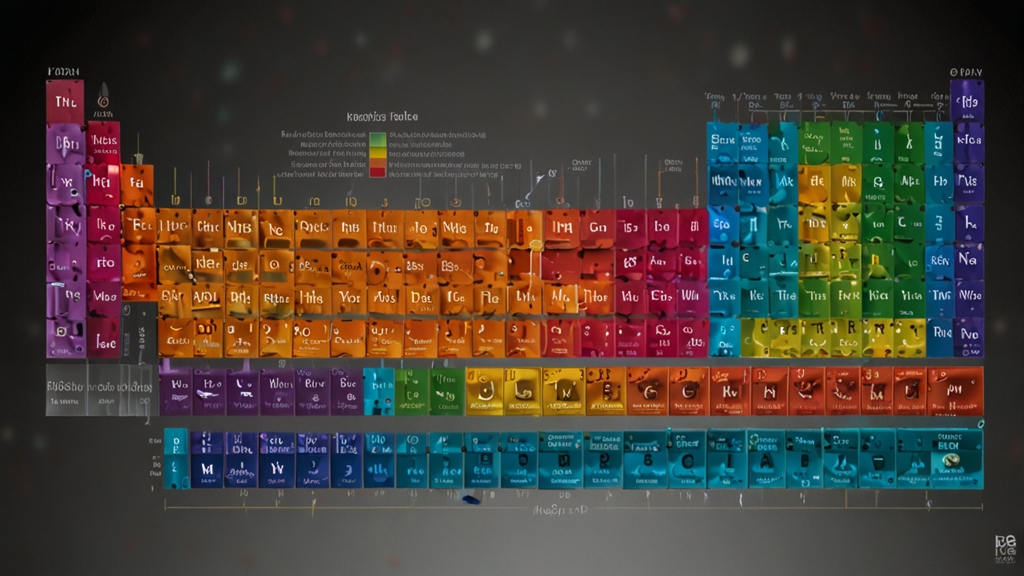Unlocking the Mysteries of the Periodic Table: Elements that Defy Logic
The periodic table is a cornerstone of modern chemistry, providing a systematic arrangement of elements based on their atomic number, electron configurations, and recurring chemical properties. However, beyond the familiar predictive patterns lies a fascinating world of elements that seemingly defy the logical structure set by Mendeleev. These enigmatic elements challenge our understanding and thrust scientists into a realm of anomalies and unique behaviors.
Francium: The Fleeting Element
Francium, designated by the symbol Fr and atomic number 87, is a member of the alkali metals group. While its placement suggests it should exhibit properties similar to its group counterparts like sodium and potassium, francium stands apart mainly due to its extreme rarity and instability. Discovered by Marguerite Perey in 1939, francium exists in minuscule amounts in nature, making it the least abundant of the first 101 elements of the periodic table.
Francium's half-life is a mere 22 minutes, rendering it incredibly challenging to study. Its transient existence defies the logical expectation of group similarities, leaving much about this element shrouded in mystery.
Technetium: Radioactivity in the Heart of the Table
Technetium, symbolized as Tc with an atomic number of 43, was the first artificially produced element, discovered by Carlo Perrier and Emilio Segrè in 1937. This element holds a peculiar position in the periodic table. Despite its place among the transition metals and close proximity to common elements like iron and molybdenum, technetium does not occur naturally on Earth in significant amounts. It is primarily obtained synthetically from uranium ores.
The anomaly lies in its radioactivity and the absence of stable isotopes, a stark contrast to its neighboring elements which are stable or have very long half-lives. Technetium's presence defies the initial logical structuring of the periodic table where naturally occurring elements were the norm.
Helium and the Noble Gas Exception
Helium, represented by He and atomic number 2, sits at the top of the noble gases column. While it shares the common noble gas property of being inert, it simultaneously breaks a fundamental periodic trend. The expectation based on electron configuration would place helium alongside hydrogen in Group 1 due to its single electron shell housing just two electrons.
Helium's position is a nod to its noble gas status rather than electron configuration, highlighting one of the earliest deviations from the table's otherwise logical predictability.
The Lanthanides and Actinides: The F-Block Conundrum
The f-block elements, comprising the lanthanides and actinides, are nestled at the bottom of the periodic table, creating another puzzle. These elements, characterized by their filling of the f-orbitals, often exhibit irregularities in their electron configurations and oxidation states. Elements like cerium and uranium display a small but significant deviation from expected configurations, leading to unique magnetic, catalytic, and nuclear properties.
The positioning of these series also speaks to an attempt at logical coherence disrupted by the complexity of their nature. The necessity to break them away from the main body of the periodic table underscores the challenges in presenting a uniform structural representation.
Copernicium and Beyond: Entry into the Unknown
As we venture into the realm of superheavy elements, starting with copernicium (Cn) at atomic number 112, and elements beyond, the periodic table takes a turn into uncharted territories. These elements are synthesized in particle accelerators and exist only for fractions of a second before decaying. Their properties are often predicted rather than observed, leading to speculative chemistry that defies the traditional logical structure.
Each synthesized element adds to the collective knowledge, pushing the boundaries of the periodic table and challenging the predictability factor that was once its hallmark.
Conclusion
The periodic table remains an exceptional tool for understanding the elements and their interactions. Yet, elements that break from the logical expectation underscore the limitations and evolving nature of scientific knowledge. As researchers continue to explore these anomalies, they embrace the inexplicable, aiming to uncover deeper truths about the building blocks of matter.
These elements remind us that the natural world often operates beyond prescriptive logic, inviting curiosity and continual investigation. In embracing the unpredictability, we may just stumble upon the next great scientific revelation lurking within the periodic table's enigmatic confines.











